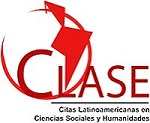The Production Models ¿source of competitive advantage? An approach to Footwear industry
Keywords:
models of production, competitiveness, productivity, footwear sectorAbstract
The footwear industry has a high capacity to generate employment, increase the flow of trade and encourage investment. This industry has been considered as one of the top ten producers in the world, however, it now shown low level development and competitiveness. The overall objective of this work is to evaluate the interrelationships between competitiveness and productivity, and determine the model of production in sector of footwear in Guanajuato, Mexico. Through a quantitative methodological approach, it studies a probability sample of small and medium manufacturing of footwear and it is assumed that the productivity of enterprises is a trigger for its competitiveness. The results provide suffi cient evidence to determine that in companies manufacturing footwear Guanajuato, productivity is not a relevant factor in their competitiveness, and it is inferred that the production model that prevails there, has characteristics of precarious Toyotism.Article Metrics
Abstract: 470 PDF (Español (España)): 247References
BOYER, Robert. (1998). La fl exibilización del trabajo en Europa. Madrid: Ministro del Trabajo.
Cámara de la Industria de Calzado del estado de Guanajuato (2011, noviembre 30) [On line]. Disponible:
CRUZ-GUZMAN, Orlando y ÁLVAREZ-CASTAÑÓN, Lorena del Carmen. (2013 marzoabril), “Relaciones de causalidad entre Competitividad y Productividad: El caso del sector calzado en León, Guanajuato”. Revista de Investigación en Ciencias Administrativas ICA 22 (158), 58-69.
CRUZ-GUZMÁN, Orlando y ÁLVAREZ-CASTAÑÓN, Lorena. (2012). Modelos de gestión taylorista en la industria de calzado de León, Guanajuato. Ponencia en XIII Asamblea de la Asociación Latinoamericana de Facultades y Escuelas de Contaduría, Administración e Informática. Memoria Digital. Buenos Aires: Alafec – Universidad de Buenos Aires, Octubre, 2012.
DE LA GARZA, Enrique. (1997). “Epistemología de los Modelos de Producción” en Los Retos Teóricos de los Estudios del Trabajo Hacia el Siglo XXI. Buenos Aires: CLACSO.
DE LA GARZA, Enrique. (1998). “Modelos de producción y trabajo en México”. En E. de la Garza (ed.) Ciencia Económica: transformación de conceptos. México, D.F.: Siglo XXI. pp. 3-32.
DE LA GARZA, Enrique. (2006). Modelos de producción en la manufactura. ¿Crisis del toyotismo precario? México, D.F.: Plaza y Valdés.
DE LA GARZA, Enrique. (2008) Modelos de Producción en la Maquila de Exportación. México, D.F.: Plaza y Valdés.
DE LA GARZA, Enrique y NEFFTA, J. (2010) Trabajo y Modelos de Producción en América Latina. Buenos Aires: CLACSO.
ESSER, HILLEBRAND, MESSNER Y MEYER-STAMER. (1994). Competitividad Sistémica. Competitividad internacional de las empresas y políticas requeridas. Berlín: Instituto Alemán de Desarrollo.
GINHOVEN, S., et al. (2001). Indicadores de Competitividad para los Países Andinos: El caso de Perú. Centro de Investigación de la Universidad del Pacífi co. Proyecto Andino de Competitividad.
IGLESIAS, E. y ROCHA, A. (2006). La Macrorregión del Calzado Guanajuatense: ¿Un espacio en transición? Revista Pueblos y Fronteras digital. UNAM. (2006). Fecha de consulta 7 de marzo de 2012 en: http://www.pueblosyfronteras.unam.mx/a05n1/ art_06.html
Instituto Nacional de Estadística y Geografía (2012, enero 31) [On line]. Disponible: www.inegi.org.mx .
PORTER, Michael. (1980). Competitive Strategy. New York: Free Press.
PORTER, Michael. (1986), “Changing Patterns of International Competition”, California Management Review, 28(2), 9-40
PORTER, Michael. (1987) “From Competitive Advantage to Corporate Strategy”, Harvard Business Review, May/June 1987, 43-59.
PORTER, Michael. (1990, 1998). The Competitive Advantage of Nations. New York: Free Press.
PORTER, Michael. (2003). “Building the Microeconomic Foundations of Prosperity: Findings from the Microeconomic Competitiveness Index”, in WEF, the Global Competitiveness Report: 2002-2003, World Economic Forum, New York: Oxford University Press.
Secretaría de Desarrollo Económico (2012, marzo 31) [On line]. Disponible: www.sde. gob.mx.
www.ciceg.org . Varias estadísticas.





















